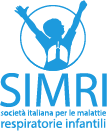Preschool wheezing and asthma are some of the most common respiratory conditions in children and represent a significant burden on the global healthcare system. Although these conditions share similar clinical presentations, they may result from different pathophysiological mechanisms. The study of these “endotypes” is essential for developing more effective targeted therapies for both preschool-aged and school-aged children.
The Complexity of Preschool Wheezing
It is well known that the frequency and severity of preschool wheezing episodes are predictive factors for a decline in lung function during childhood. Recent studies show that nearly half of children under six years of age experience at least one episode of wheezing. However, only one-third of these children will develop asthma in school age.
Based on clinical presentation, some phenotypes of preschool wheezing have historically been identified (such as “viral episodic wheezing” or “multi-trigger wheezing”). However, these classifications do not account for the underlying pathogenic mechanisms of the different types of wheezing. Studies of lower airway samples from patients with recurrent preschool wheezing have revealed different endotypes of wheezing (atopic or non-atopic wheezing, with low or high infection rates), reflecting the same heterogeneity seen in school-age and adult asthma. Specifically, only 25% of preschool wheezing patients appear to have an atopic endotype (with high Th-2 inflammation), while 75% of cases show low Th-2 inflammation. Despite this, the most common therapeutic approach in clinical practice for treating preschool wheezing, the use of inhaled corticosteroids (ICS), is the same for all patients, regardless of their specific wheezing endotype.
Growing evidence indicates that only children with a clear Th-2 inflammatory profile respond effectively to ICS therapy. In other cases, the non-targeted use of corticosteroids may be ineffective or even harmful.
This highlights the need to identify non-invasive biomarkers to early identify children who will benefit from ICS and those who require alternative approaches, such as targeted use of antibiotics for cases of wheezing associated with bacterial infections (with neutrophilic inflammation in the airways). Peripheral eosinophils and exhaled nitric oxide (FeNO) are already used to define the endotypic profile in pediatric asthma patients, but age-specific cutoffs for preschool children are not yet known.
Recently, biologic drugs (omalizumab, mepolizumab, dupilumab) have revolutionized the treatment of severe asthma in school-aged children with Th-2 inflammation. The most recent drug, tezepelumab, is currently the only medication available even in the absence of Th-2 inflammation biomarkers.
Unfortunately, the use of these drugs in younger children is still limited due to a lack of clinical studies.
Future Directions in Wheezing and Asthma Treatment
It is known that the presence of specific bacteria in the upper airways may have a protective effect against the development of asthma, suggesting that targeted interventions on the microbiome could represent a future therapeutic option. The use of bacterial lysates, such as OM-85 BV, has also shown to reduce airway inflammation and improve symptoms in children with wheezing, thanks to its immunomodulatory mechanisms.
Environmental and Hormonal Factors
Air pollution, both indoor and outdoor, is a crucial factor in the development and severity of asthma. Prolonged exposure to fine particulate matter (PM2.5) and pollutants such as nitrogen dioxide can induce inflammation and remodeling of the airways.
Additionally, the role of sex hormones in the progression and severity of asthma is increasingly recognized. While there is a higher prevalence of asthma in males during childhood, this ratio reverses during and after adolescence, and in adulthood females are more affected. Currently, a protective role of androgens against asthma is hypothesized, but the exact mechanism by which sex hormones influence the pathogenesis of asthma is not yet known.
Conclusions
Preschool wheezing and progression to asthma represent heterogeneous conditions that require a personalized approach. The identification of objective biomarkers, the use of biologic drugs, and the development of alternative therapies, such as bacterial lysates, offer new hope for improving the management of these conditions. An endotype-driven approach could enable not only better symptom control but also the prevention of progression to asthma in children with preschool wheezing.
Bibliography
- Hillson K, Saglani S, Custovic A. Preschool wheeze and asthma endotypes: implications for future therapy. Expert Rev Respir Med. 2024. doi:10.1080/17476348.2024.2440468.
- Makrinioti H, et al. European Respiratory Society statement on preschool wheezing disorders. Eur Respir J. 2024;64(3):2400624. doi:10.1183/13993003.00624-2024.
- Robinson PFM, Fontanella S, et al. Recurrent severe preschool wheeze: from prespecified diagnostic labels to underlying endotypes. Am J Respir Crit Care Med. 2021;204(5):523-535. doi:10.1164/rccm.202009-3696OC.
No metadata found.



